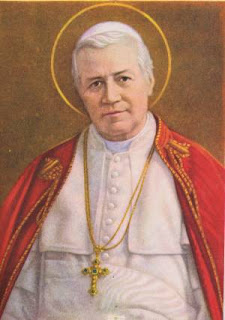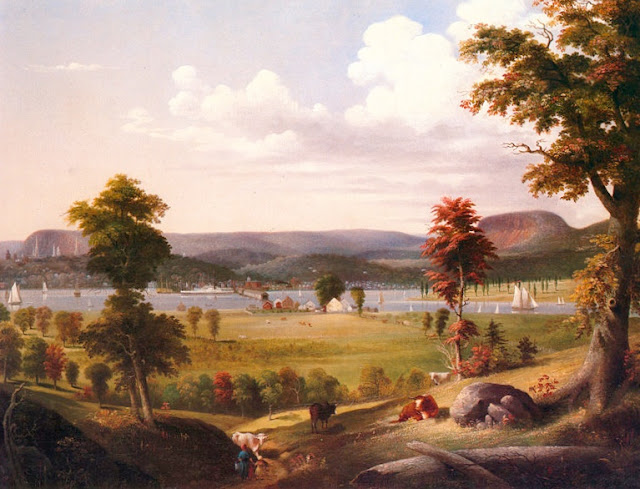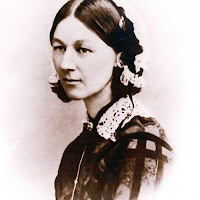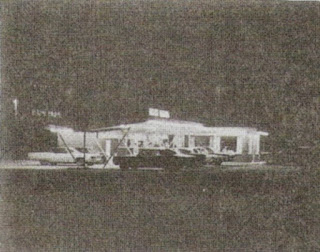
This year, I've been writing (very informally) about favorite musical works and discoveries. Recently, I was so grateful to discover the music of Barbara Harbach.
I actually know Dr. Harbach socially. Our spouses are heads of St. Louis-area universities, so we occasionally see each other at community events. I knew she had studied with the famous organ master Helmut Walcha, who had also been teacher of
a dear friend of mine. The last time she and I chatted at a local event, she mentioned recent recording projects. So later that day, out of curiosity, I checked Amazon and realized she had ten recordings of her own compositions and several of her performing other composers.
Well, I purchased three of the CDs of her compositions, and I loved them so much that I purchased three more, and then I ordered the remaining four. I had to make a four-hour road trip this past weekend so I binge-listened to her music. I'll catch up with her other CDs later.
Dr. Harbach holds a baccalaureate degree in music from Pennsylvania State University, master of musical arts degree from Yale, Konzertdiplom from the Musikhochschule-Frankfurt, and a doctor of musical arts degree from the Eastman School of Music, plus an honorary doctorate in music from Wilmington College. In 2016, she was ranked as the number one female organist and as one of the 30 Most Innovative Women Professors Alive Today. Her website is
barbaraharbach.com, and her faculty page is
https://music.umsl.edu/Faculty/BarbaraHarbach.html
Untrained to write about music, I read
some reviews of Harbach’s work, which helped me articulate what I love about her works. Her pieces are tonal and melodic, and beautiful, reminding me of composers like Copland (in his ballets), Howard Hansen, Ned Rorem, David Diamond, and also Ralph Vaughan Williams. It’s “sunny” music but not sweetly so, in the way I sometimes find John Rutter’s choral music (though I love his work, too). One reviewer refers to the “open-air quality” of Harbach's music, “the aural equivalent of American of the work of Grandma Moses”, with the originality but without the naivety, since (as another reviewer points out) they are skillfully-crafted and -orchestrated. The pieces are also well performed and recorded, with Harbach sometimes playing keyboards. As someone with only childhood music lessons but who has always loved to explore composers' works, I've enjoyed the music of artists like Copland, Diamond, Rorem, Ginastera, Hovhaness, Holst, Britten, Vaughan Williams, and others who appreciated in some way their own national heritage. (Bartok still lies beyond me, unfortunately.) Listening to the piece “Confluencity,” about the meeting of the Mississippi and Missouri Rivers, I thought of Smetana and also Ives, in the way the later depicts contrasting forces coming together.
She has written on themes important for Missouri (see my list of favorite pieces below), and she recently wrote Symphony for Ferguson, inspired by Michael Brown's death and the accompanying events:
https://www.youtube.com/watch?v=IjsDhOegcz0
In an interview, found
here, Harbach talks about some of her influences. "I was fortunate enough to take classes with Mel Powell at Yale University as well as a semester with Sam Adler at the Eastman School of Music. From Mel I learned to appreciate improvisatory ingenuity and from Sam rhythmic athleticism. Composers often write what they like to hear, and I adore listening to Howard Hanson, Aaron Copland, Roy Harris, Mary Howe, Thea Musgrave, Gian Carlo Menotti, Adolphus Hailstork, and, of course, Ralph Vaughan Williams as well as many others. Many of the mid-twentieth century composers studied with one of my heroes Nadia Boulanger (1887-1979) in Paris. She was an outstanding pedagogue, composer, organist and pianist. Some of my favorite pieces are Fanny Mendelssohn Hensel’s Overture (c. 1830), Clara Schumann’s Piano Concerto and the operas of Ethel Smyth..."
She goes on in that interview to mention other women composers that she enjoys (and which I promise to listen to): "Emma Lou Diemer, Beth Anderson, Joan Tower, Libby Larsen, Cindy McTee, Judith Statin, Shulamit Ran, Melinda Wagner, Jennifer Hidgon and Ellen Taaffe Zwilich, the first woman Pulitzer Prize winner in 1983," as well as Grace Williams, Elizabeth Maconchy, Nicola Le Fanu, and Germaine Tailleferre. "These are just a few composers whose aesthetic ideals we all share, and there are many more women creators writing stunning and exciting music..."
Read more of those interviews and pieces at her website. A short, incomplete list of some of my favorites among her works are “One of Ours - A Cather Symphony: I. On Lovely Creek, II. Autumn in Beaufort, III. Honor At Boar's Head" (on Orchestral Music I), “American Solstice for Chamber Ensemble” (on Chamber Music I), “A State Divided A Missouri Symphony I. Missouri Compromise, II. Skirmish at Island Mound, III. The Battle of Westport" (on Orchestral Music II),“Arcadian Reverie for String Orchestra” (on Orchestral Music I), “Tres Danzas para Clavecin for Harpsichord” (on Chamber Music III), “The Soul of Ra for String Orchestra” (Chamber Music II), most of the hymn arrangements—including my favorite hymn tune, “Kingsfold” (Toccatas, Flourishes and Fugues - A Celebration of Hymns), “Night Soundings for Orchestra I. Cloak of Darkness, II. Notturno, III. Midnight Tango" (Orchestral Music II), “Gateway Festival Symphony I. Confluencity, II. Sunset: St. Louis, III. After Forever" (Orchestral Music II), "Jubilee Symphony I. Bellerive, II. Mirth Day Fiesta, III. Tritons Ascending” (Orchestral Music II), “Freeing the Caged Bird: Maya Angelou, Sara Teasdale, Kate Chopin, Emily Hahn" (Chamber Music II), “Pioneer Women: From Skagway to White Mountain” (Vocal Music)...
You get the idea. If the captain of the sinking ship lets me take only one CD to the proverbial desert island, mine would be Vaughan Williams's third and fifth symphonies, and if two... that same one and also Harbach's Orchestral Music I or II, or one of the others——or maybe I’ll just stuff several of her CDs under my life jacket and be thankful.
(She didn't know I was writing this post but, when I emailed it to her to make sure it was factually correct, she told me that a new CD, Orchestra Music III, will be out in a couple months, yay.)
 A shout-out for my daughter's birthday today! She's in Japan this year but we sent her presents and Skyped, and she treated herself to a big cultural festival at the Haneda airport. I'm writing this in the evening, some hours yet from the time of her birth, near midnight Mountain Time.
A shout-out for my daughter's birthday today! She's in Japan this year but we sent her presents and Skyped, and she treated herself to a big cultural festival at the Haneda airport. I'm writing this in the evening, some hours yet from the time of her birth, near midnight Mountain Time.






















